Originally published on The New Inquiry.
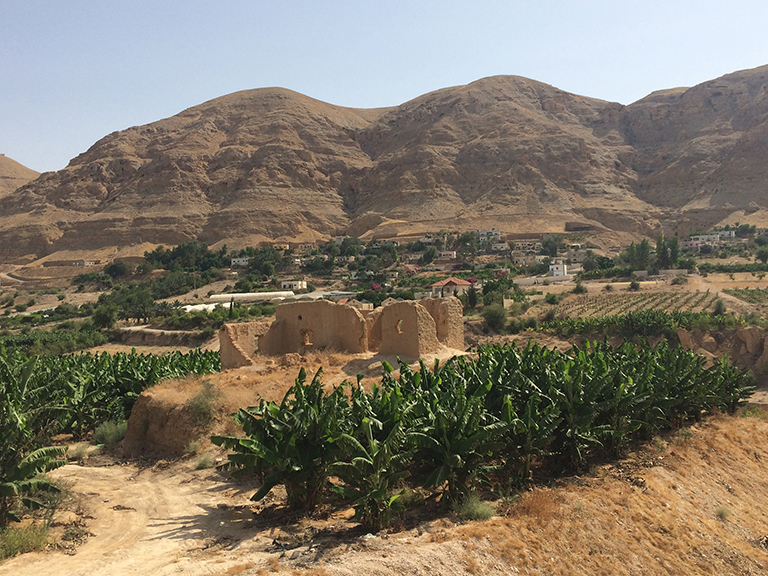
In Jericho, Palestinians find a resort from their occupations
At the edge of the Judean Hills, after the mountains of Palestine have calmed themselves and their wrinkles have gradually smoothed out, the city of Jericho sits in a dry plain beside the Dead Sea, the lowest point on Earth. The city looks nothing like the rest of the country. Jericho is the one place in the West Bank where the land is flat and plentiful. Unlike the rest of the region—generally pictured as a gentle landscape of rolling green hills adorned by olive orchards and gray Israeli settlements—Jericho is constantly hot. Its landscape is dusted with a brownish-yellow mix of sand and dirt, interrupted mainly by groves of palm trees that stretch for miles, until they are finally halted by Israeli settlements. For many Palestinians, Jericho is almost a foreign country, a place where the abundance of land decreases active confrontation with the Israeli military occupation. In Jericho, it’s easy to pretend you’re somewhere else.
It is no coincidence then Jericho is also the West Bank’s biggest domestic resort destination. Once you pass the Israeli checkpoint at the entrance to the town on the main road, the first thing on your right is a massive, abandoned casino. Israelis once flocked there in the 1990s, diverted to Jericho by the ban on gambling in their own country and spurred on by the longstanding Israeli association of Arab cities with hedonism, “Oriental” pleasures, and corruption that dates to the beginning of Zionism and the establishment of Tel Aviv beside Jaffa. If you gaze too long at the casino you’ll miss what’s on the left side of the road, where 5,000 Palestinians who fled from their homes in what became Israel in 1948 live in the Aqabat Jaber refugee camp. 25,000 people who used to live in the camp fled to Jordan when Israel occupied Jericho in 1967 and were never allowed to return. Today, the camp still feels a bit more spacious than other camps in the West Bank—a refugee camp befitting a tourist city in the desert, perhaps.
Ahead of you on the road is the city center, a few blocks of shops and a small plaza crowded with middle schoolers flirting, teenagers drinking Arabic coffee on their lunch breaks, and old men in dusty suits going for afternoon walks. Five minutes’ bike ride from the square there is are stately homes built by wealthy Jerusalem families during the British Mandate period; fifty meters further down the road you will see a split-level that wouldn’t be out of place on the Brady Bunch. Between the palm trees, on dirt roads winding lazily away from the square, are hundreds of abandoned resort homes, records of the decades upon decades of Palestinian vacations that have taken place here.
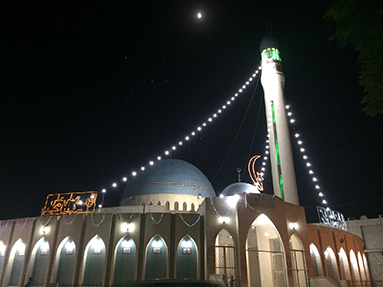
It is precisely the heat and sense of difference that animates Jericho’s appeal to Palestinians. Few places in Palestine really align with an Orientalist vision of what the “Middle East” looks like, but Jericho is an exception, a neat vision of the kind of landscapes the world imagines “Arabs” inhabit, the kind which are regularly painted on cheap cloth for pilgrims requiring souvenirs from the Holy Land. For some Palestinians, raised on foreign cartoons that dabble in such imaginaries as well as local children’s tales that exaggerate them for effect, Jericho is the closest they can get to the desert world they are told their mythical ancestors once inhabited.
Part of Jericho’s Arabian nights-themed tropical resort appeal may be that a large percentage of the city’s native population is black. While in many Palestinian cities, shades of skin color range from pale to olive to “asmar” (similar in meaning to the English “bronze”), in Jericho, the color scale starts at black and moves lighter, with the paler hues more common elsewhere functioning as a giveaway that one is either a visitor, a domestic migrant, or part of an elite family. Blackness in Palestine isn’t confined to Jericho; in many cities, villages, and refugee camps across the country there are large numbers of black Palestinians, especially in the south. In the center of Jerusalem’s Old City there is even an “African Quarter,” though this neighborhood differs from most as its residents directly trace their lineage to Muslim pilgrims from Sudan and points farther west along the Sahel. Most black Palestinians maintain the same family lineage stories as other Palestinians do, rooted in specific villages and places in the land. While many black Palestinians are thought to be descendants of slaves who were brought or escaped from Egypt and the Sudan, others are believed to descend from African traders or pilgrims who just never left, like many of their counterparts from other parts of the world. However, speculations on origins are largely just that, much like how people jokingly speculate on the possible Crusader ancestry of red-headed Syrians or Lebanese.
In Palestine, the extent to which skintones are inscribed with political or cultural weight is only one of a number of social cleavages that exist on a wide variety of axes—urban/rural, refugee/non-refugee, settled/Bedouin, Christian/Muslim, West Bank/48/Gaza/Diaspora, etc. At the same time, the occupation has certainly reinforced the sense that Palestinians of all shades, faiths, and origins are targeted most saliently for their “Palestinian-ness.”
A friend of mine who works as a tour guide in Bethlehem, for example, frequently tells foreign visitors that Palestinian Christians are the first Christians in the world and they are the same community that has existed since the time of Jesus. He does this as part of an effort to combat Israeli discourses of Palestinian foreignness and Jewish indigeneity that seek to religiously and historically legitimize the contemporary dispossession of Palestinians, and which will undoubtedly be heard on any tour in Israel. But when tourists are not around, he makes no secret of the fact that his extended family migrated to the region in the 1700s from Jordan, where they had lived for more than a millennium after fleeing persecution by the Jewish Himyarite kingdom in Yemen in the 5th century. These narratives are not winners when it comes to facing down Israeli bulldozers and Zionist excuses, and such differences are often glossed over or intentionally forgotten for political expediency. But not everyone is content to forget, or able to put aside difference and history in the name of fighting the occupation.
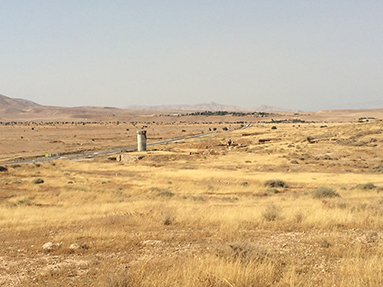
The Jordan Valley, where Jericho is located, has been subjected to an intense campaign of dispossession and land confiscation since the occupation began in 1967. Today, more than 91 percent of the region—which is more than a quarter of the West Bank—is off-limits to Palestinians, taken over by Israeli settlements and military bases. The Palestinian population has dropped from up to 300,000 in 1967 to around 59,000 today, mostly left concentrated inside the city. In that time, Israeli authorities have made it clear that even in any negotiated settlement they never intend to leave the area, going so far as to draw up plans to build a wall on the Jordan border. But the Jordan Valley is huge by Palestinian standards, and in the expanse of flat land where the city of Jericho itself sits, the pressures of occupation seem less overwhelming than elsewhere. This is aided by the fact that, unlike other regions where Israeli settlements and bases directly abut Palestinian cities, in Jericho they are scattered over a wider area, leading to fewer collisions with the Israeli occupation.
As a result, some see Jericho as a place to remember pre-occupation Palestine, and to create alternate futures. Karim Kattan has been working with a team over the last year to develop an artist residency called El Atlal on a small plot in the city, aiming to create a cultural hub for Jericho and the country as a whole that might overcome what he sees as the dominance of “mediocre political art.” Kattan is a native of Bethlehem and a product of French education, a rarity in Palestine, but a reminder of the shared colonial cosmopolitanisms that made their mark around the major cities of the Eastern Mediterranean in the last century. Far from the separation wall, the olive groves, the settlements, the watch towers, and the barbed wire, Kattan hopes that Jericho will offer artists a place to consider Palestine unfettered by the constant, banal forms of daily Israeli violence. “I think Jericho is the city of the future of Palestine. It is a city that links south to north and Palestine to the rest of world, and it’s going to become a laboratory of the Palestinian nation state,” Kattan told me as we sat at a Jericho cafe frequented by daytripping Palestinian families. “This is one of the few places that has land left that can actually grow, one of the rare places in Palestine where you feel that possibilities exist. Real, actual political possibilities.”
There’s something to be said for the way that sitting in Jericho allows you to see Palestinian society in a different light. The Israeli occupation is kept at bay at the outskirts of the city, and Jericho has become a meeting place for those just trying to getting away from across Palestine. All of this, with an otherwise marginalized Palestinian blackness at its heart, allows Jericho to figure as an image of a different reality and an alternative path for the nation’s future. Even the geography itself lends itself to such an endeavor, as the flatness, open space, and relative emptiness lets you imagine that the nation’s political future has space to build and to form itself.
But where this future leads is a different question. Since the Oslo Accords, the security apparatus has been the first thing to develop in Jericho, bolstered by US and EU aid that requires such security funding and training as a condition of any support. US and EU security officials regularly visit Jericho to tour “Independence University,” also known as the Palestinian Academy for Security Studies. While its name may bring to mind a neoconservative think-tank on the Potomac, the focus is a bit less academic: Independence University is a training school for the PA’s domestic security forces. As with security forces the world over, in Palestine this force most often makes the news for breaking up demonstrations, beating and torturing those who commit “security violations,” and ensuring “security coordination” with Israel. The school regularly offers classes and seminars on the way to effectively “run” a modern state, and on these Jericho campuses the global powers ensure that the same kind of dictatorial police state they cooperate with, train, and back across the region will take root in Palestine, too.
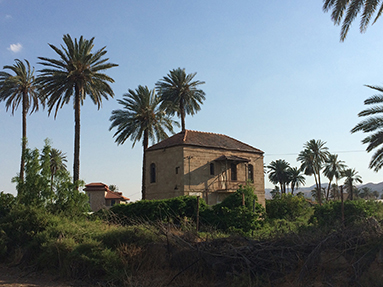
The parallels to Israeli policy are not merely the stuff of military coordination. As Palestinian artist and designer Omarivs Ioseph Filivs Dinæ told me in an interview last year, “The current uniforms of the Palestinian police, the color of the police and the army, are equal or identical to the Israeli uniforms. A lot of (Palestinians) wouldn’t be satisfied if it were otherwise. For them, emancipation is to become the enemy, rather than becoming something else, or better, or totally dismantling this pedigree. … We need to be very careful, we are turning into what we have always tried to resist. These guys are not only threatening us, they are informing our imaginations and our discourse in a way that has made us unaware of who we are anymore.” Palestinian elites—informed by nearly seven decades of Israeli occupation and their connections throughout the Arab World—are busy creating an amalgam of the security states that surround them, and Jericho is the one place they can do it.
On the other side of Jericho from the security institutions, immediately beside the abandoned casino that once catered to Israelis, is a vast tract of land that will soon host 1,500 “premium villas,” half a dozen museums, a shopping center, and a water amusement park. “Jericho Gate,” as the project is called, is the first tourist-aimed gated community to be built in Palestine, coming on the heels of a similar residential project near Ramallah called Rawabi. Rawabi has been nicknamed a “Palestinian settlement” for its blatant use of the same architecture, style, ideology, and idiom as Israeli settlements. Israel refused to hook that project up to water for nearly a full year after it was finished—stalling the flight of elite Ramallah families to the gleaming white gated community carved into the landscape—but authorities finally gave in recently after direct intervention by Prime Minister Benjamin Netanyahu himself.
In Jericho, investors led by major Palestinian firm Padico Holding are betting that a neoliberal future may be possible as well. The website boasts that the project will be a “second-home community for Palestinian families, in addition to serving as an exquisite destination for vacationing travelers by presenting an active lifestyle with a blend of entertainment amenities” and mentions Jericho’s close proximity to Amman, though it fails to mention the military checkpoints that litter the road and the hours of security procedures Israeli authorities put in the way of most Palestinian travelers to Jordan. But now even the Allenby Bridge border crossing, infamous for the hours Palestinians are forced to wait outdoors or in locked buses between the Israeli checks, has VIP services for those who can pay (mostly tourists and moneyed Palestinians) to skip as many of the procedures as possible. Those who can’t afford the VIP fees can eat lead.
Even without “Jericho Gate,” the relationship of Palestinian tourists to the city of Jericho itself is troubled. Perhaps to rebut the constant Zionist claim that this was a land without people, Palestinians have elevated “heritage” and “culture” nearly to the status of religion, and the most popular cafes, restaurants, and museums outside of flashy Ramallah inevitably involve extensive displays of “Bedouin cushions,” “traditional embroidery” and lots of olive wood souvenirs. This Orientalist dream plays out exquisitely in Jericho, where almost every restaurant is arranged as an outdoor garden around a fake spring as if in a traditional Palestinian home, and where every establishment catering to visitors and the villas Palestinians make for themselves are essentially a reproduction of the fantasy of Jericho. In these reproductions, the people of Jericho hardly make an appearance, besides as a background understood to be somehow tropical.
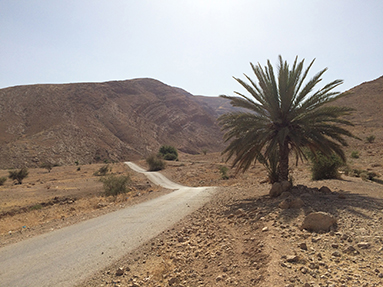
Unsurprisingly, resentment lies close beneath the surface. In northern Jericho, just beyond the security academy, sits Hisham’s Palace, a winter getaway for an 8th century Umayyad Caliph that is today a magnificent showcase of the era’s unique blend of Byzantine and early Islamic art and architecture. The site is nearly empty, and Essa al-Farah, who works the ticket counter, assures me that this is normal. With little prompting, al-Farah unleashes a tirade against tour guides and the bus drivers that herd so much of Palestine’s tourist industry in big tour buses from one spot to another. “Foreigners love to come in, but the guides tell them ‘there’s nothing inside.’ Sometimes they unload the bus in the parking lot and then explain to the tourists that there is nothing to see, or just give the whole explanation right there instead of letting them pay 10 shekels ($2.50) to enter. Instead of showing them our civilization by leading them in like the Jews do.”
Al-Farah related story after story of getting into arguments with Palestinian visitors and tourists, his favorite being the time when a man with a very expensive BMW apparently brought four blonde foreign women to the site but refused to pay the fee alongside them. While the man waited in 100 degree heat in his car, al-Farah led the European visitors on an extensive, guided tour that included step-by-step explanations of every exhibit in the museum and free mint tea at the end. Throughout the two-and-a-half hour process, the man who had brought the group refused to pay the 10 shekels to check on his friends, despite his obvious ability to. Al-Farah noted that these same Palestinian visitors hardly blink when paying 60 shekels ($16) to enter the beach clubs along the Dead Sea, all of which are owned by Israeli settlement companies, as Israel forbids Palestinians from owning any beach land. “It’s not right,” he adds, though he says he as about given up hope on trying to attract Palestinians anymore.
Kattan, the Bethlehem native currently planning for the opening of Jericho’s first art residency, recognizes the problems in Palestinians’ contemporary relationship to the city, and is mindful of the potential for them to be reproduced through his work. Noting that for him and for Palestinians from elsewhere, “Jericho is a foreign land,” he highlighted the need to root his project in the community. The unspoken fear is that the residency might come to resemble its Israeli counterparts too much, like everything else in the country. Artist “colonies” were set up in villages across Israel in the 1950s inside the homes, cafes, mosques, and churches that 750,000 Palestinians were expelled from en masse in 1948. These colonies became hubs of Israeli creativity, as artists flocked to them to imagine a different kind of world and to produce a Zionist art that they hoped would nourish and define the spirit of the “new Jew” Israel was busy creating. The emptied Palestinian villages they set themselves up in—today major tourist sights for Israelis and foreign tourists—became a site for thinking about a Jewish Zion abstractly, even as the memories and reminders of Zion’s actual Palestinian inhabitants lay in plain sight.
Kattan certainly acknowledges that risk. In his opinion, “one of our main dangers is becoming Israelis in the mind, which we are more and more. We’re adopting all of the worst aspects of Israel. But we have to be able to think of a Palestinian society that is separate from Israel and from the rest of the Arab World.” While it might be hard to imagine such a future in the Jordan Valley, at dusk—with the twinkling, chaotic white lights of Amman shining from the hills across the Jordan River and the hard orange streetlights of an Israeli military camp named “Flower of Jericho” shining from the hills closer by—a sense of greater possibility pervades, aided by the landscape’s gentleness, which hides the infrastructure of occupation that still covers the region. But whether hopes for the construction of an alternative Palestinian dream in Jericho turn out to be as deceptive as this little oasis town’s sense of calm remains to be seen.